
An A-Frame in the Woods Provides a Growing Family with Their First Sustainable Home
Last Updated: Apr 9, 2025Marike Bijtelaar and Quirijn Wijtten were visiting a tiny-house expo in Holland when an A-frame caught their attention. The A-frame, a simple architectural style and mid-century icon (from about 1950 into the 1970s) is a triangular structure with a signature peak formed by rafters or trusses joined at the top and bolted to plates or floor joists below.
The roof covers the rafters, extending down to the ground. Horizontal collar beams create the cross-piece of the A to stabilize the structure and, typically, support a sleeping loft. The result is a home, cabin, beach house, lake home, or ski chalet that seemingly floats above its foundation, with expansive windows that blur the separation of indoors and outside.
"We became enthusiastic about the A-shape buildings," Bijtelaar recalls. "We love the shape because of the design and the effective use of space: You do not need much space in the top of the building, where you only sleep." The couple decided they wanted to build a wood A-frame house by themselves.
Table of Contents
- What Is An A-Frame House?
- The Sustainable Advantage
- How Much Do Avrame A-Frame Kits Cost?
- A-Frame for a Growing Family
- What Companies Sell A-Frame Kit Homes?

Bijtelaar began searching on the Internet and found Avrame. The company, which is based in Estonia, has a US office in Salt Lake City and representatives worldwide. Founded by Indrek Kuldkepp, Avrame sells off-grid, sustainable kits that allow homeowners to build their own A-frames. "Avrames can be built anywhere, on any style of foundation," Kuldkepp says. "They're great for off-grid applications because of their roof angle, which is perfect for installing solar panels."
Bijtelaar and Wijtten bought a piece of property in the woods, near Hulshorst in the Netherlands, from her family. Then, they purchased Avrame's Trio 75. "There was already a small house on the property," she says. "We were only allowed to build a maximum inner volume of a building (decided by the local authorities), and the Trio 75 with dormers on one side of the building was exactly the volume we were allowed to build."

What Is An A-Frame House?
"The A-frame house is a type of construction that uses A-shaped triangular trusses as loadbearing construction," Kuldkepp explains. "Instead of having exterior walls, as traditional houses do, A-frames are just roof."
Kuldkepp agrees that A-frames were popular in the 1960s and '70s, as they provided homeowners with a way to build an inexpensive first or second home in an unusual style. "But the building technology wasn't as sophisticated as it is today," he adds. A-frames were challenging to insulate, weren't used year-round, and thus became less popular.
"With modern building materials," he adds, "it's now easy to construct an affordable A-frame house that's comfortable in all weather and locations." After designing his own A-frame to be comfortable and energy-efficient, Kuldkepp realized his house cost about half as much to build as other homes. His home is also off-grid, with a 10 kWh battery bank, 4 kW inverter, and six photovoltaic panels at 250W each.

So, he decided to start a business selling do-it-yourself A-frame house kits. "A-frame structures are faster and cheaper to build than traditionally framed buildings," he says. "Also, maintenance is relatively low as most of the exterior surface is covered with metal roofing. The roof we provide with our kits, RUUKKI Classic C, has a 25-year aesthetic guarantee and 50-year structural guarantee. The gable walls and soffits may need repainting after several years, but again most of the gable wall area is windows."

Avrame offers 15 models, which are divided into the Trio, Duo, and Solo series. All the models have full-length windows, which bring inside abundant natural light while providing expansive views to the outdoors.

The Sustainable Advantage
Avrame's kits are engineered for quick assembly, with zero waste of time or materials. The kit includes wood parts (pre-cut in the factory), the roof, the floor structure, windows and doors, building accessories, and drawings, and detailed instructions for building the structure.

"Many of our customers are doing a DIY build or self-managed build," he says, "so, Avrame puts a lot of effort into educational materials (manuals, videos, and the like) to encourage people to be involved in the building their A-frame. This is the way to save costs and create a home that's truly their own."
Kuldkepp says two people can assemble most of the kits. The homes, he adds, are also energy-efficient and maintain heat better than traditional A-frames because the walls are constructed with a large insulation cavity.
If a homeowner chooses polyurethane insulation, the resulting R-value could be R-70 or more. For sustainability reasons, and if the location doesn't demand that much insulation, homeowners may choose mineral wool or polystyrene (EPS). The kits also come with triple-glazed windows and doors.
"Most importantly, our optimized floorplans create homes without wasted space," he says. "The biggest energy losses come from heating/cooling spaces you do not actually use, like extra guest bedrooms."
How Much Do Avrame A-Frame Kits Cost?
"In the US, current custom home builds average more than $200 per square foot," Kuldkepp says. "Avrame kits are designed to be considerably more affordable, from the foundation on up."
"The original concept was conceived with a DIY approach in mind," he continues, "so you can estimate between $100-$125 per square foot for your total budget (outside of land expenses)." If the homeowner uses a builder, "local rates and building costs will come into play, and the total budget can range from $135-$225 per square foot (outside of land expenses). The materials you choose to include in your kit, access to your building site, sourced finish materials, sub-contracted help, and local market rates will all impact the final build cost."

A-Frame for a Growing Family
"From disassembling the old house until the day we moved into the new A-frame was exactly one year," Bijtelaar says. The couple kept part of the existing structure on their wooded property to use for the children's sleeping rooms, which they connected with the Avrame house.
Bijtelaar says one of their biggest challenges was "analyzing the best choices during every step, from insulation material, design of the roof connection of the Avrame to the existing building, to making the bathroom waterproof."
Their favorite features include the A-frame shape, the woodstove, and the abundant windows. "The house is directly connected to the forest," Bijtelaar says. "Because of the wood and the insulation, the house is super comfortable," she adds. "In terms of sustainability, this is a first good step for us."
What Companies Sell A-Frame Kit Homes?
Avrame isn't the only A-frame kit company. Other innovative options include Den, Ayfraym, and Backcountry Hut Company. Options vary in size and shape, but all are insulated for four-season use and pay close attention to efficiency and resource management.
Heating and Cooling
Find a wide variety of researched and vetted heating and cooling products that help address home comfort.

Stiebel Eltron CON 300-2 Premium Wall-Mounted Convection Heater - 202030
Stiebel Eltron
In Stock
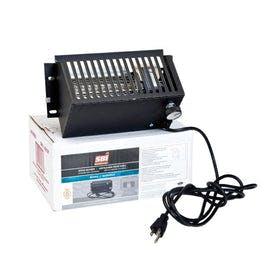
Drolet Ultra-Quiet 100 CFM Blower With Variable Speed Control - AC02050
Drolet
Out of Stock
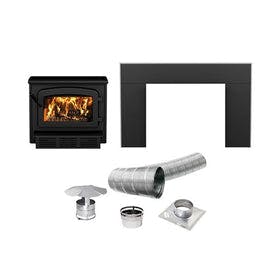
Drolet Escape 1800-I Wood Stove Insert Trio (25ft) DB03127K
Drolet
Out of Stock
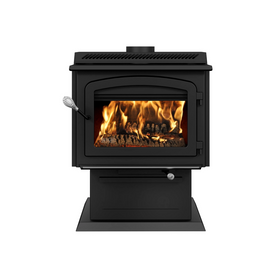
Drolet HT-3000 Wood Burning Stove DB07300
Drolet
Out of Stock

Drolet Escape 1500-I Wood Insert Trio (25 FT) DB03137K
Drolet
Out of Stock

Drolet Escape 1800-I Wood Insert DB03125
Drolet
Out of Stock
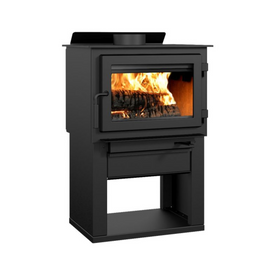
Drolet Deco II Wood Stove DB03205
Drolet
In Stock

Stiebel Eltron CON 150-1 Premium Wall-Mounted Convection Heater - 202026
Stiebel Eltron
In Stock

Drolet Escape 1800-I Wood Insert Trio (35 FT) DB03128K
Drolet
Out of Stock
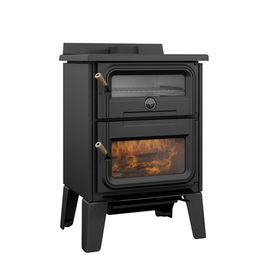
Drolet Bistro Wood Burning Cookstove DB04815
Drolet
In Stock

Den
Den has a nifty flat-pack cabin kit. It includes precisely milled components, predrilled lumber, a metal roof, and a large window that brings daylight into the minimalist interior. The cozy 115-square-foot floor plan is perfect for a cabin or backyard retreat. It is insulated for year-round use, and you can outfit the tiny home with propane or a solar-power package.

Ayfraym
The cleverly named company Ayfraym was inspired by a cabin the founder's grandfather built in the 1970s (when A-frames were all the rage). The model is a classic A-frame design, with three bedrooms, two bathrooms, walkout decks, vaulted ceilings, and large windows. Buy the plans, then hire a builder or purchase the complete kit. The kit includes Ayfraym engineering support and FSC-certified lumber framing, exterior and interior finishes, appliances, light fixtures, and more. Because the A-frame is 1,943 square feet, the company requires a licensed general contractor.

Backcountry Hut Company
They're not quite A-frames, but the modernist sensibility behind the designs is similar in Backcountry Hut Company's contemporary cabin kits. Based on Vancouver Island, the company has crafted its prefab, flat-pack home kits to leave minimal impact on the environment. All of the wood used is sourced from Canadian suppliers who follow sustainable forest management practices.

The company has been so successful that it recently added an A-frame model, System 00. The design "distills the iconic A-frame aesthetic down to its purest essentials," according to the website. The kit for the 107-square-foot structure includes assembly drawings and a building guide, along with glulam structural elements, Douglas fir decking, floor panels, exterior SIGA paper and tape, a metal roof, and a dual-pane window and door package.
Camille LeFevre
Camille LeFevre is an architecture and design writer based in the Twin Cities.

